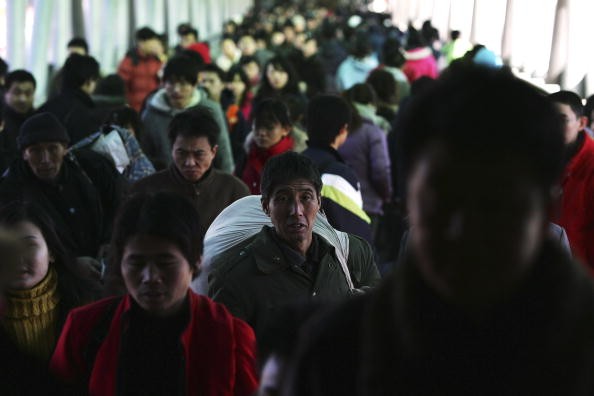As the world's most populous country, China annually hosts the largest human migration on Earth annually. Each beginning of the Chinese lunar calendar marks the sendoff of nearly three billion trips through flights and trains--one that has both fueled and disrupted the domestic economy.
With a scale that's unique in China, the exodus for the Chinese New Year has piqued interest as it puts forward important economic implications to an annual social trend. With facts reported by Bloomberg, here are some of the facts that make "Chunyun," as the phenomenon is called, noteworthy to observe.
Migration Spikes During Chunyun
The Chinese New Year, alternatively called the Spring Festival, is typically celebrated within 16 days within the start of the Chinese lunar calendar. The Chinese government imposes a seven-day holiday starting on the eve of Chinese New Year, as celebrations extend up to the Lantern Festival on the 15th day.
Chinese workers within China see the Chinese New Year as an opportunity to reconnect with families back to their hometowns, since many of them work in the country's urban corridors. That results to the massive congestion of Chinese transportation systems, particularly for flights or trains.
Chunyun, referring to the 40-day season for travel spikes, accounts for billions of trips in China during the Chinese New Year. This year, around 2.98 billion trips are expected to ferry at least 356 million passengers within China, as many of them see this as their only opportunity to spend the holidays back home.
Travel Trends Throughout the Years
Weather trends have barely dented the annual diaspora for the Chinese New Year, as in the 440-kilometer average racked up by trips last year amid the notorious cold snap. More trips are expected this time, with milder conditions and the clearance of smog that blighted China at the start of the year expected.
Stellar economic growth leading to the steady rise of the Chinese middle class have made trips lengthier towards warmer places. The country's southern parts, such as Hainan, Xiamen, and coastal cities in Guangdong Province and surrounding areas, have become go-to places.
What's more, international trips have become more prevalent in recent years. Places like Australia, Japan, South Korea, and the U.S. proved to be among the most popular destinations for Chinese travelers during Chunyun, with 6 million of them expected this year.
Logistical Positives and Negatives
With the growing recognition of growing congestion in China's transportation network, let alone ticket reservations, technological advancements have since come to aid in easing stressful scenarios during Chunyun. Nonetheless, glitches still occur from time to time, given the expectedly-heavy load.
Understandably, several sectors are affected variedly by the travel spikes during Chunyun. Apart from the travel sector, the retail sector benefits from the trend, as more Chinese travelers tend to spend more on alcohol and other luxuries during that period.
But despite understandable gains, the travel sector bears the brunt of inefficiencies that may arise during travels made within Chunyun. With the entirety of China's transportation network already congested during that time, unwanted yet common disruptions generate quick ire among the riding public.



























